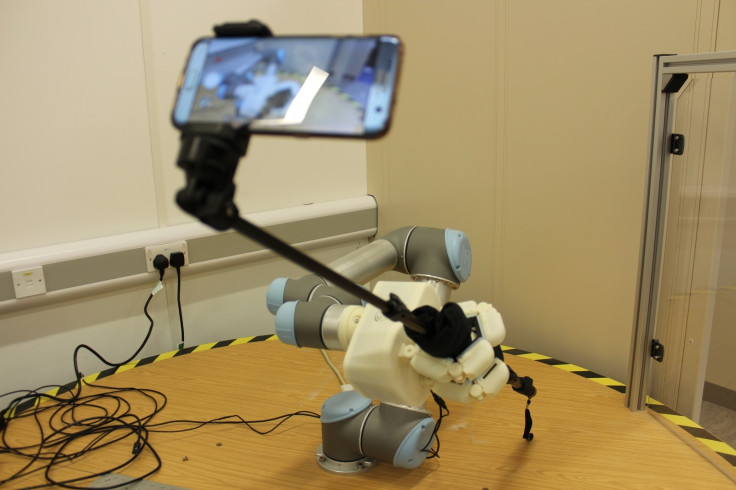Intelligent machines: How prepared are the C-Suite for the next industrial revolution?
In reality, smarter technologies are more likely to complement the workforce, rather than shift the human element out of large parts of their organisation.

Sixty-seven per cent of executives believe that intelligent machines will dominate the workforce in the coming years. But how prepared are businesses and CIOs for this possible scenario?
Industries are awash with talk of Industry 4.0. For the unenlightened, this is the fourth industrial revolution, promising an intelligent future with drones littering the skies, driverless cars, and smart fridges capable of serving a White Russian on demand.
This had led to the C-suite looking at how best to extract value from exciting emerging technologies. This is evidenced by recent research from Deloitte, suggesting executives are positive about Industry 4.0, but lack confidence in their organisations' preparedness. So whilst it's a safe bet that just about all businesses want to benefit from emerging technologies – confusion still reigns in how to do this well.
Most are enthusiastic but aren't really sure why they want it, others think they're not ready for potentially sweeping technological changes. This is not helped by the fact that companies are in different stages of existing technology understanding and utilisation, with terms meaning different things to organisations at different levels. Some may have been working towards this over the past five years – other organisations simply don't have data at their fingertips or plan to make use of things like analytics, the Internet of Things, or Smart Video.
There is a need to cut through the hyperbole and get to the reality quickly for business executives looking to change strategies by using technologies that they might not fully understand. It's a challenge to overcome in order for businesses and CIOs to be prepared for a more connected, intelligent future.
It's not tech vs people – it's about more collaboration
It won't become a battle of dominance between technology and people. Many are worried the transformative effects will be so severe that humans will end up usurping ourselves out of the equation. In reality, smarter technologies are more likely to complement the workforce, rather than shift the human element out of large parts of their organisation. Humans understand how to relate and meet the needs of other humans. With the best tech in the world and no humans, no customers will be satisfied as circumstances change, technologies glitch, and services get disrupted.
AI, and analytics driven by more intelligent use of human data can help staff to 'level up' – giving them the ability to better interpret the deluge of data and do more intelligent actions with it. More powerful tools can help organisations to be smarter and faster – better informing decision making and helping organisations build future-proofed workforces.
If leveraged correctly, intelligent software has the potential to create a different, more flexible way of working that works with people, not against them.
Don't get lost in the complexity
From Netflix using machine learning advanced algorithms to suggest new shows to users they may not have initially chosen, predictive keyboards using recurrent neural networks – AI and machine learning are encroaching all around us. Many are unaware they're using it as part of packaged services in banking (chat bots that direct you to the right person), entertainment ('you may also like' recommendations), or the analytics that social media offer to give you instant insights on your social graph.
Instead of getting lost in the complexities of AI and similar technologies and wasting time dreaming about the potential revenue streams – look at what immediate benefits intelligent solutions can offer to your organisation. It needn't be led by the latest buzzword. The solution might not be AI!
AI + other technologies can help It's perhaps when paired with smart video that AI can make the kind of (tangible) impact needed to convince the sceptics (amongst the C-Suite). Take retail – intelligent analytics powered by machine learning can then be used to gain valuable insight on shopper habits and in-store preferences, which in turn helps the business improve the in-store experience. Faced with an ocean of big data, businesses not only need a way to prep and organise it, but tools powered by machine learning help to visualise the information clearly and concisely.
AI and smart video can be used to analyse differing reactions when customers view merchandise in order to optimise routes through the store. It can also be used to alert staff when queues get too long, or exits get blocked – among many types of activity where a pair of electronic eyes and some intelligence are a useful tool in making a better customer experience.
With smart video using AI, our world will get a lot more intelligent as the power of computing is brought to bear on the world outside of the database and spreadsheet, using sensors and video cameras as eyes to look out onto the world.
Remember the human
It's important not to be moved by big headlines and avoid buzzword hype – which will lead to decision makers making bad decisions based on clichéd marketing terms. It's important to note that the overselling of such tools has led to an oversaturation of all things 'AI', with it becoming increasingly difficult to discern the AI fact from fiction.
A balance must be struck – the C-suite must embrace it at the right time in their journey. The early adopters may risk jumping in before they can walk, and the risk averse might completely avoid its benefits altogether. That's what makes new technologies so exciting – as long as they are applied with more than careful planning. Empathy is needed too. Without empathy, protecting the well-being of staff and the needs of customers may not be factored in from the start. That would be a shame. Business is a social effort – we're working by, with and for people, after all.
Scott Brothers is EVP Corporate Development, ONVU Technologies.





















